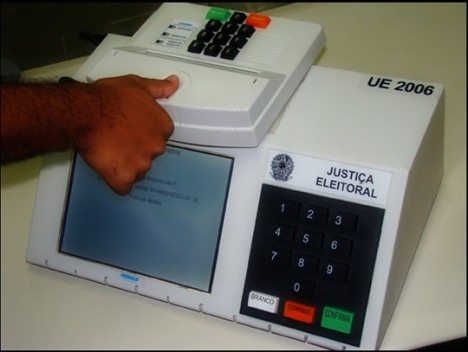
Peru designed its own e-voting system, but the authorities still haven’t granted the resources needed to start its implementation.
The influence of e-voting in the world is no longer questioned. At the end of 2012, the Carter Center reported that over 1,7 billion people – out of the 7 billion inhabiting the planet – use voting machines to exercise the right that supports democracy: suffrage. This number reflects a consolidation of trust on an electoral system that provides security, transparency and speed for choosing the people’s representatives: e-voting.
The balance shows that trendsetters like Brazil, the US and Venezuela kept their status as leaders in voting automation, while Belgium, Colombia, Peru and Ecuador took important steps towards modernizing their voting systems.
Ecuador
Last July, this country tried out its first approach to e-voting. The Ecuadorian National Electoral Council (CNE) rolled out e-voting for the election of five spokespeople of the Rural Parish Board of La Esmeralda parish, located in Canton Montalvo (Los Rios). Through this voting pilot, citizens could validate the easy and proper operation of the new system; transmission took approximately 10 minutes after the voting ended, and the post-event election showed 100% exactness in the count, proving the elections were trustworthy and transparent.
Peru
On September 30th, the Pacarana Disctrict of Cañete province in Peru employed the e-voting system designed by the National Office of Electoral Process (ONPE) for the second time in its history. This system was designed with the purpose of modernizing voting in the country. Currently, the Office is still asking the Executive to provide the necessary resources for voting automation, a process that has a legal base but lacks financial support.

Brazil employs an e-ballot with a numerical keypad and a biometric identification device.
Colombia
At various points during the year, the National Registry announced that the first stages towards automating elections in the country had been completed, and they could assure that the nation was checking every detail in order to benefit from e-voting in the near future. The institution stated that purging the voter registry and allowing the electronic registration of candidates, as the initial steps of voting automation, were proofs of the advances made.
Brazil
The e-ballots designed by the Superior Electoral Court, which have a numerical keypad, were tested once again in Brazil. On October 7th, 150 million voters went to the polls to choose 5,500 mayors. Election Day went by without a hitch and with clean results, strengthening the automation present in the country since the 90’s.
Belgium
After being a trailblazer of e-voting, this country fell behind due to their lack of disposition to modernize their systems. However, it was announced this year that a Smartmatic-designed voting system will be used in the country for the next 15 years.
Venezuela
Twice during the year (on October 7th and December 16th), this country held elections. The results of its 100% automated system were able to sort out not only to the country’s state of political polarization but also to complex multiple elections for governors and legislators. The technology provided by Smartmatic includes voting machines, e-ballots, biometric identification devices, digitally-signed software; an encryption code shared by the political parties, the voting authority and the company, and printed voting vouchers that allow an immediate audit of up to 54% of the votes cast.
United States
On November 6th, the North American giant went to the polls. This country has significant differences with those we have mentioned, since every individual county manages all the aspects related to an election (from the purchase of materials to the definition of procedures). This is how each region has acquired the technology that best suits its laws and voting ways, which range from manual voting with automated counting (mechanical, punch cards and optical scanners), to fully automated elections using touch-screen voting machines. States where the technology was updated showed no problems, unlike those where the voting platform hasn’t been modernized yet.
